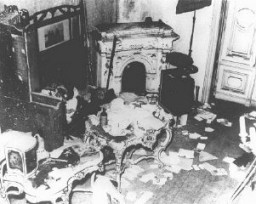You searched for: austria
<< Previous | Displaying results 51-100 of 505 for "austria" | Next >>
-
Marie Sidi Stojka
ID CardMarie belonged to a tribe of Roma ("Gypsies") called the Lowara Roma who traveled in a caravan and made a living as itinerant horse traders. The caravan spent winters in Vienna, Austria's capital, and summers in the Austrian countryside. When Marie was 18, she married Karl Stojka from the same tribe. Marie's family was Roman Catholic and her ancestors had lived in Austria for more than 200 years. 1933-39: By 1936 Marie had six children. They lived with a caravan, and were used to freedom, travel and hard…
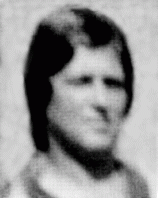
-
Gertrud Gruenbaum
ID CardBorn to a Jewish father and a Catholic mother, Gertrud grew up in Vienna. Trude, as she was affectionately called, attended a public secondary school, where half of her classmates were Jewish. At age 7 she rejected music lessons for classes in dancing and acting. Trude wanted to be like Greta Garbo. She launched an acting career at age 18, assuming the stage name Trude Hermann. 1933-39: Because Gertrud was Jewish she couldn't get acting jobs in Austria and nearby Sudetenland. In 1937 her agent found work…

-
Frieda Greinegger
ID CardFrieda was the fourth of five children born to strict Catholic parents. She had one brother and three sisters. Frieda grew up on a large farm near the village of Michaelnbach in northern Austria. The farm had cattle, horses, pigs and poultry, and the children worked long hours helping their parents on the farm. At age 12, Frieda left school to work full time on the farm. 1933-39: Germany annexed Austria in March 1938. When war broke out in September 1939, Frieda's brother was drafted into the German army.…
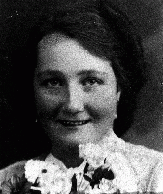
-
Frederick Dermer
ID CardFrederick was born to a Jewish family in the Austrian capital of Vienna. His father died when he was a baby, and he and his mother moved into an apartment with Frederick's widowed grandfather. As a young boy, Frederick attended a Viennese public school. 1933-39: Frederick was a rambunctious child. Once, when his grandfather was baby-sitting, Frederick used a silk lampshade as a "parachute," and jumped from the top of the wardrobe closet. That was the last time Frederick's grandfather would baby-sit.…

-
Lea Ofner-Szemere
ID CardLea was born in the city of Sombor in northeastern Yugoslavia. When she was 3 years old, her parents divorced and she moved to Vienna with her mother, who taught English and French to Austrian children. Lea enjoyed living in Vienna as a child. 1933-39: Lea returned to Sombor almost every year to visit her mother's relatives. There, she became reacquainted with her younger half-sister, Julia, and her older half-brother, Francis, and would miss them when she returned to Vienna. In 1938, the Germans annexed…

-
Ceija Stojka
ID CardCeija was the fifth of six children born to Roma ("Gypsy") parents who were Roman Catholic. The Stojka's family wagon traveled with a caravan that spent winters in the Austrian capital of Vienna and summers in the Austrian countryside. The Stojkas belonged to a tribe called the Lowara Roma, who made their living as itinerant horse traders. 1933-39: Ceija grew up used to freedom, travel and hard work. Once, her father made her a skirt out of some material from a broken sunshade. She was 5 years old and…

-
Hans Heimann
ID CardHans was born to a Jewish family in the Austrian capital of Vienna. His parents ran a successful export shop for ladies' hats and sold their wares to many different countries. As a boy, Hans attended a private, preparatory school in which courses were taught in both English and German. 1933-39: Hans was attending business school when the Germans annexed Austria in 1938. Hans and his family watched from their window as German troops, led by Hitler, goose-stepped into Vienna. Hans was immediately forced out…
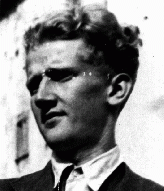
-
A crowd cheers Hitler in Vienna
PhotoA cheering crowd greets Adolf Hitler as he enters Vienna. Austria, March 1938. After a prolonged period of economic stagnation, political dictatorship, and intense Nazi propaganda inside Austria, German troops entered the country on March 12, 1938. They received the enthusiastic support of most of the population. Austria was incorporated into Germany the next day.

-
Corpses in Mauthausen
PhotoPiles of corpses, soon after the liberation of the Mauthausen camp. Austria, after May 5, 1945.
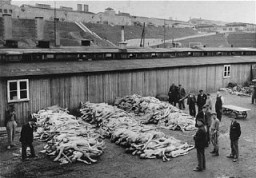
-
SS and Nazi police prepare for a raid
PhotoSS and Nazi police prepare for a raid on the Jewish community offices in Vienna. Austria, March 18, 1938.
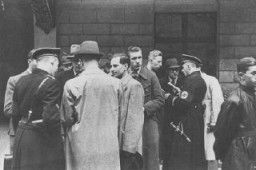
-
Mauthausen camp quarry
PhotoA view of the quarry at the Mauthausen concentration camp, where prisoners were subjected to forced labor. Austria, 1938-1945.
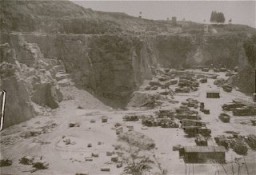
-
Bodies of victims of the Gunskirchen subcamp of Mauthausen
PhotoCorpses of victims of the Gunskirchen subcamp of the Mauthausen concentration camp. Austria, after May 5, 1945.
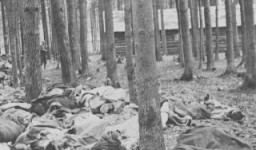
-
Mass grave at Mauthausen
PhotoA mass grave at the Mauthausen concentration camp. Photograph taken after the liberation of the camp. Mauthausen, Austria, May 10–15, 1945.

-
Romani (Gypsy) women in the Lackenbach camp
PhotoRomani (Gypsy) women march to work in the Lackenbach internment camp. Lackenbach, Austria, 1940-1941.
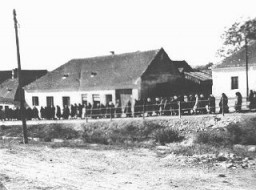
-
Storm Troopers stand guard outside a defaced Jewish-owned business
PhotoShortly after the German annexation of Austria, Nazi Storm Troopers stand guard outside a Jewish-owned business. Graffiti painted on the window states: "You Jewish pig may your hands rot off!" Vienna, Austria, March 1938.
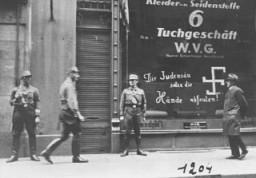
-
Public humiliation of Jews in Vienna
PhotoTwo Jewish men (center, and at right in overcoat), carrying paint and brushes, who were forced by Austrian Nazis to paint "Jude" on the fronts of Jewish-owned businesses. Vienna, Austria, 1938.
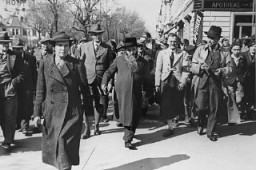
-
A Jewish man is forced to paint anti-Jewish graffiti on a storefront in Vienna
PhotoOnlookers watch as a Jewish man is forced to paint anti-Jewish graffiti on a shuttered storefront. Vienna, Austria, March 1938.
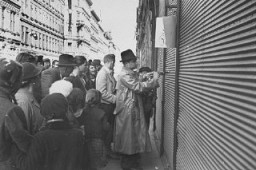
-
An SS officer standing in front of Jews assembled for deportation
PhotoAn SS officer stands in front of Jews assembled for deportation. Vienna, Austria, 1941-1942.
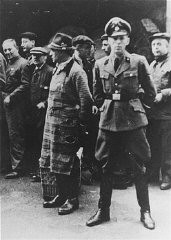
-
A pile of corpses in the Mauthausen concentration camp
PhotoA pile of corpses at the Russian Camp (Hospital Camp) section of the Mauthausen concentration camp after liberation. Mauthausen, Austria, May 5-15, 1945.

-
13-year-old survivor of the Mauthausen concentration camp
PhotoA 13-year-old orphan, a survivor of the Mauthausen concentration camp. Photograph taking following liberation of the camp. Austria, May 1945.
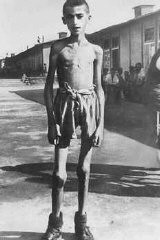
-
Hartheim castle euthanasia killing center
PhotoHartheim castle, a euthanasia killing center where people with physical and mental disabilities were killed by gassing and lethal injection. Hartheim, Austria, date uncertain.
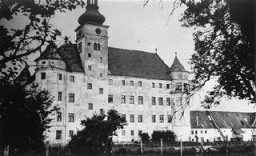
-
Ernst Reiter
ID CardErnst was an only child born to atheist parents in southern Austria during the middle of World War I. Raised in Austria's second largest city, he loved the outdoors, especially skiing in the Alps. In the early 1930s Ernst became a Jehovah's Witness. Although Austria was then in a deep economic depression, he was fortunate to find a job as a sales clerk in a grocery store. 1933-39: Austria's Catholic government was hostile towards Jehovah's Witnesses. When the Germans annexed Austria in March 1938, their…

-

-

-
Ossi Stojka
ID CardOssi was the youngest of six children born to Roma ("Gypsies") who traveled in a family wagon. His family was Roman Catholic. Their caravan spent winters in Vienna, Austria's capital, and summers in the Austrian countryside. The Stojkas belonged to a tribe called the Lowara Roma, who made their living as itinerant horse traders. Ossi's ancestors had lived in Austria for more than 200 years. 1933-39: Ossi was 2 years old when Germany annexed Austria in March 1938. The Stojka family wagon was parked for the…

-
German Prewar Expansion
ArticleAdolf Hitler was determined to overturn the military and territorial provisions of the Treaty of Versailles. Learn more about Nazi German territorial aggression before WWII.
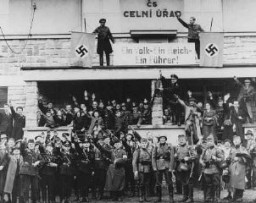
-
Members of the League of German Girls
PhotoA parade of young Austrian women, members of the Nazi youth organization the League of German Girls (Bund Deutscher Maedel). Graz, Austria, February 20, 1938. The Hitler Youth and the League of German Girls were the primary tools that the Nazis used to shape the beliefs, thinking and actions of German youth.
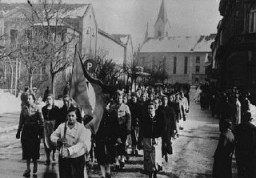
-

-
Karl Stojka
ID CardKarl was the fourth of six children born to Roman Catholic parents in the village of Wampersdorf in eastern Austria. The Stojkas belonged to a tribe of Roma ("Gypsies") called the Lowara Roma, who made their living as itinerant horse traders. They lived in a traveling family wagon, and spent winters in Austria's capital of Vienna. Karl's ancestors had lived in Austria for more than 200 years. 1933-39: Karl grew up used to freedom, travel and hard work. In March 1938 his family's wagon was parked for the…
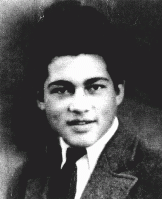
-
Johanna Niedermeier Buchner
ID CardJohanna was born in Vienna when it was still the capital of the Austro-Hungarian Empire. Her Christian family experienced the disruption resulting from the empire's collapse, as well as the instability of the Austrian republic. The depression of 1929 hit Vienna especially hard. In 1931 Johanna became a Jehovah's Witness. 1933-39: Johanna traveled constantly in and out of Austria distributing our Jehovah's Witness literature. In March 1938 Germany annexed Austria and her family was subjected to Nazi law;…
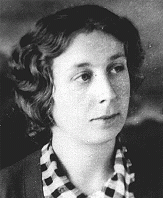
-
Mauthausen - Maps
Media EssayAn estimated 197,464 prisoners passed through the Mauthausen concentration camp system between August 1938 and May 1945. At least 95,000 people were killed there.

-
Gregor Wohlfahrt
ID CardGregor was the second of six children born to Catholic parents in a village in the part of Austria known as Carinthia. His father was a farmer and quarryman. Disillusioned with Catholicism, his parents became Jehovah's Witnesses and raised their children according to that religion. As a boy, Gregor loved mountain climbing and skiing. 1933-39: Gregor attended school and worked as a waiter. The situation for Jehovah's Witnesses worsened after Germany annexed Austria in March 1938; Witnesses refused to swear…
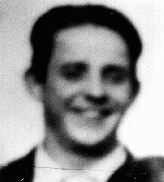
-
Judith Gabriel Dichter
ID CardJudith, nicknamed Julie, was one of five children born to religious Hungarian-Jewish parents in the Burgenland, the eastern province of Austria that was part of Hungary until 1921. She married Tobias Dichter, a traveling salesman from Vienna who had sold merchandise to her father. The Dichters moved to an apartment in Vienna's Jewish Leopoldstadt district, where they raised two children. 1933-39: The Germans have annexed Austria. One week after the annexation, Germans came to Julie's apartment to take her…
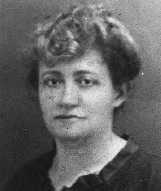
-
Franz Wohlfahrt
ID CardThe eldest of six children born to Catholic parents, Franz was raised in a village in the part of Austria known as Carinthia. His father was a farmer and quarryman. Disillusioned with Catholicism, his parents became Jehovah's Witnesses during Franz's childhood and raised their children in their new faith. As a teenager, Franz was interested in painting and skiing. 1933-39: Franz was apprenticed to be a house painter and decorator. After Nazi Germany annexed Austria in 1938, like other Jehovah's…
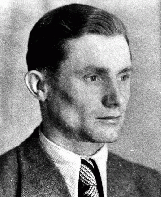
-
Alice Edelstein-Friedmann
ID CardAlice, born Alice Edelstein, was the youngest of two children raised in a Jewish family in the Bohemian village of Hostoun, near Prague. Shortly after Alice was born, her father moved the family to Vienna. There, Alice's father owned a wholesale shoe business. As a child, Alice attended public school and also received a religious education. 1933-39: After graduating from business school, Alice had a hard time finding a job because of the economic depression in Austria. In 1936 her father let her work in…
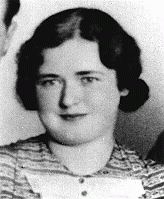
-
Johann (Hansi) Stojka
ID CardHansi, as he was called by family and friends, was the third of six children born to Roma ("Gypsy") parents who were Roman Catholic. The family wagon traveled with a caravan that spent winters in Vienna, Austria's capital, and summers in the Austrian countryside. The Stojkas belonged to a tribe called the Lowara Roma, who made their living as itinerant horse traders. 1933-39: Hansi grew up used to freedom, travel and hard work. He was 9 years old and their wagon was parked for the winter in a Vienna…

-
Wilhelm Edelstein
ID CardWilhelm was the oldest of two children in a Jewish family living in the Habsburg capital of Vienna. Shortly after Wilhelm was born, World War I broke out. Because of food shortages, Wilhelm and his mother left for her hometown of Hostoun, near Prague. After the war they returned to Vienna where his father had remained to run his shoe business. As a young man, Wilhelm worked for his father. 1933-39: In March 1938 Germany annexed Austria. Soon after, the Germans arrested Wilhelm because he was a Jew dating…

-
Josef Edelstein
ID CardJosef was one of seven children born to a Jewish family in the Czechoslovakian village of Hvozdnice. After graduating from school, Josef worked as a salesman in Vienna. In 1912 he married Ida Kohn, and the couple had a son before he left to fight for Austria in World War I. After the war, they had a daughter. 1933-39: Because of the economic depression of the 1930s, it was difficult for Josef to make a living in his wholesale shoe business. In 1938 the Germans annexed Austria [the Anschluss], and soon…
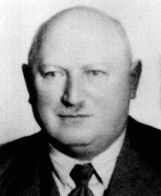
-
Willibald Wohlfahrt
ID CardWillibald was the youngest of six children born to Catholic parents in a village in the part of Austria known as Carinthia. Disillusioned with Catholicism, his father and mother became Jehovah's Witnesses when Willibald was an infant, and they raised their children in their new faith. His father became the leader of the local Jehovah's Witness congregation. 1933-39: Willibald lived in a beautiful area near lakes and mountains. The Wohlfahrts were active in Jehovah's Witness missionary work, even though…

-
Renee Schwalb
ID CardVienna, home to some 175,000 Jews before World War II, was a major center of European Jewry. Vienna was also the intellectual heart of the Palestine resettlement movement. Most of the city's Jews lived in two large districts on the east side of the Danube Canal. Renee's father owned a prosperous men's clothing store in the city. 1933-39: German forces occupied Austria in March 1938. Anti-Jewish measures were quickly imposed. Renee's father was prohibited from doing business and his store was seized. He…
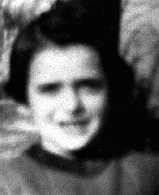
-
Forced labor in a quarry
PhotoForced labor in the quarry of the Mauthausen concentration camp. Austria, date uncertain.

-
Home vandalized during Kristallnacht
PhotoA private Jewish home vandalized during Kristallnacht (the "Night of Broken Glass" pogrom). Vienna, Austria, November 10, 1938.
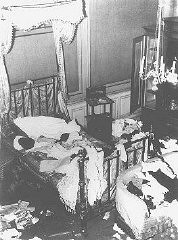
-
Death at a concentration camp quarry
PhotoA Soviet inmate lies dead in the Mauthausen concentration camp quarry. Austria, between July 1941 and May 1945.
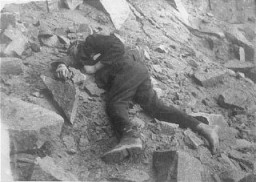
-
Internment camp for Roma (Gypsies)
PhotoRoll call at an internment camp for Roma (Gypsies). Lackenbach, Austria, 1940–41.
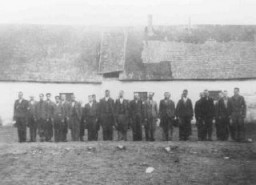
-
Mauthausen camp after liberation
PhotoMauthausen concentration camp inmates with American troops after the liberation of the camp.

-
Vienna - Animated Map/Map
Media EssayGermany annexed Austria in March 1938, bringing approximately 200,000 additional Jews under Nazi rule. The Nazi regime quickly extended anti-Jewish legislation to Austria. At the time, the majority of Austrian Jews lived in Vienna, the capital and...
-
Two political prisoners upon liberation
PhotoTwo political prisoners, after US soldiers liberated the Gusen concentration camp. Austria, May 12, 1945.

-
Corpses of prisoners killed in Gunskirchen
PhotoCorpses of prisoners killed in the Gunskirchen camp. Gunskirchen was one of the many subcamps of the Mauthausen camp. It was liberated by US forces in early May 1945. Gunskirchen, Austria, photo taken between May 6 and May 15, 1945.
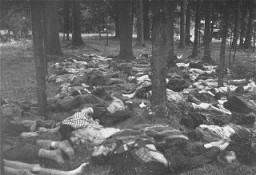
-
Home vandalized during Kristallnacht
PhotoA private Jewish home vandalized during Kristallnacht (the "Night of Broken Glass" pogrom). Vienna, Austria, November 10, 1938.
